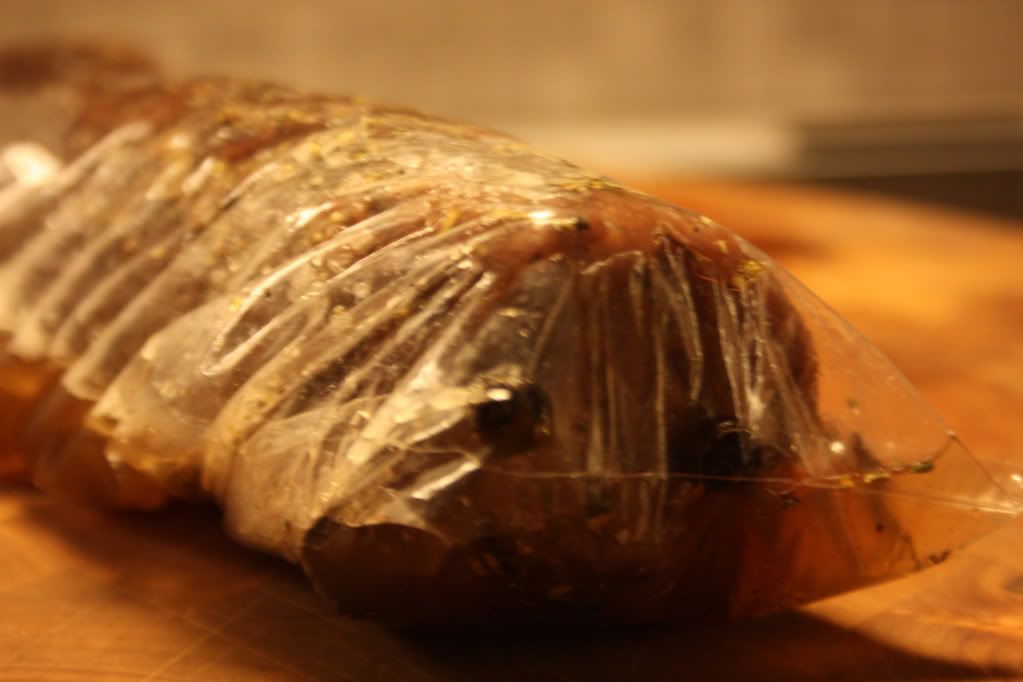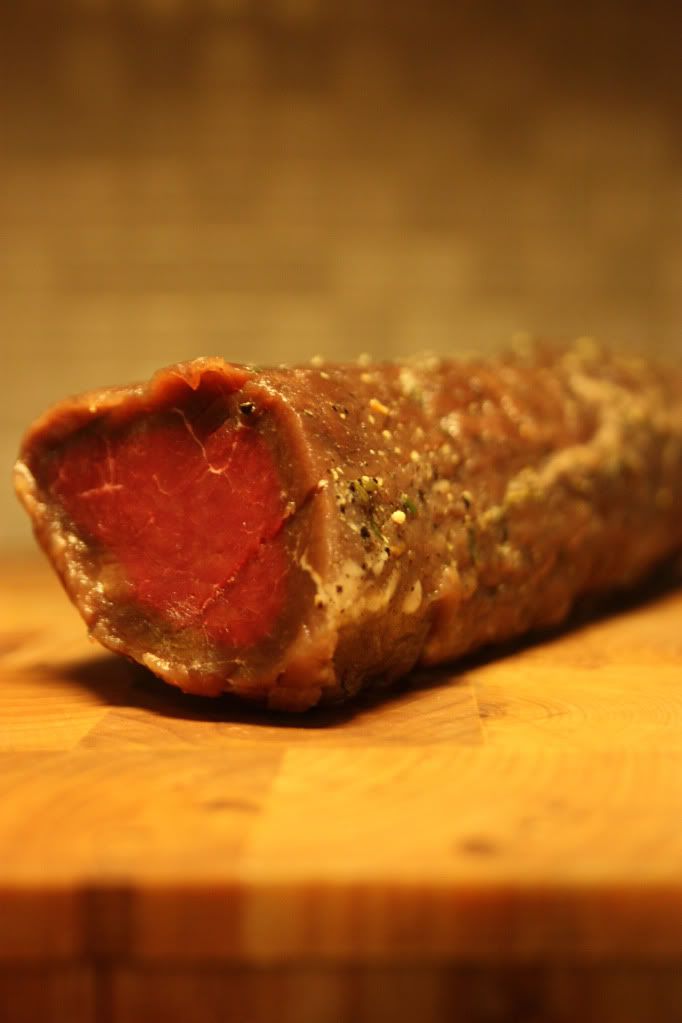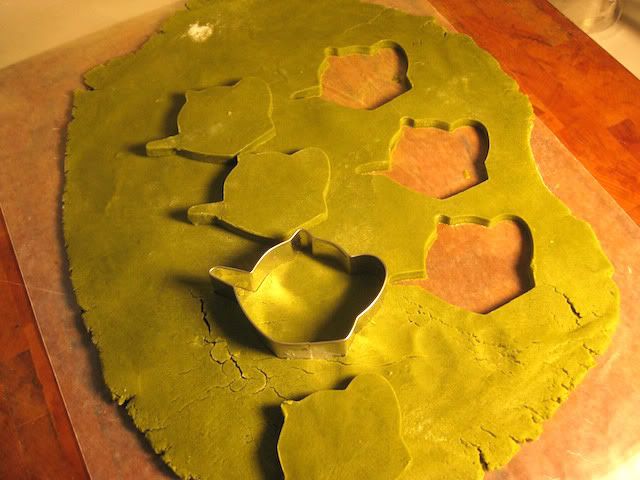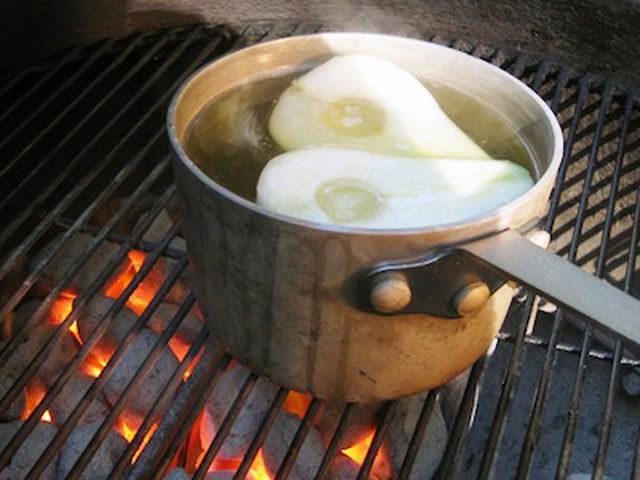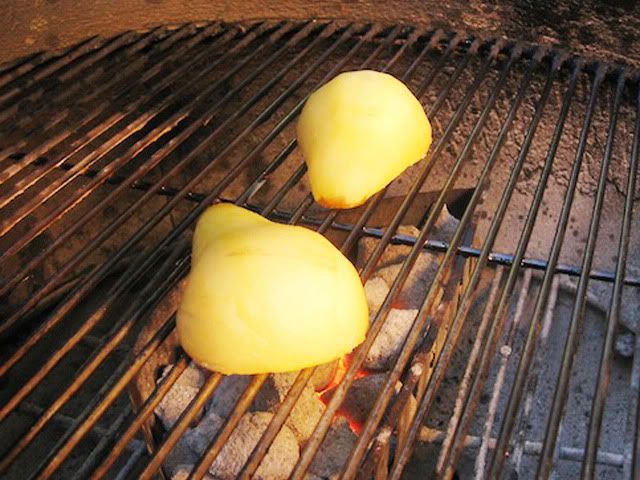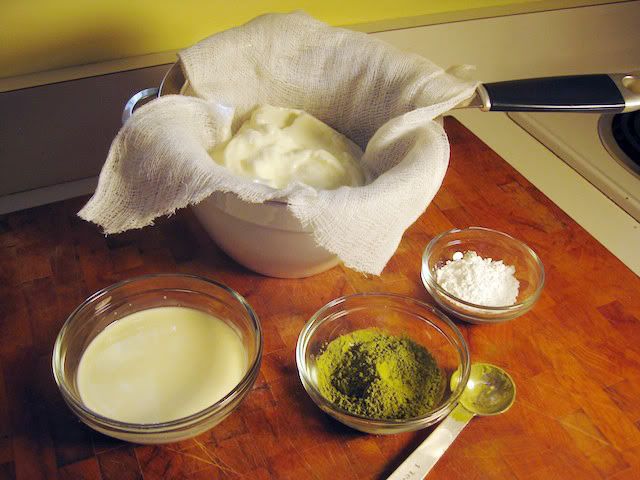You are using an out of date browser. It may not display this or other websites correctly.
You should upgrade or use an alternative browser.
You should upgrade or use an alternative browser.
Battle Three Tea!
- Thread starter Clark Deutscher
- Start date
Gary H. NJ
TVWBB Platinum Member
Team USA - Jeff Gary Don. Here are my four prep photos.








Dennis Lundin
TVWBB Fan
Team Swedish BBQ Wikings.
Prepp photos.




Prepp photos.




j biesinger
TVWBB Platinum Member
Honestly....Can Sunday get here quicker? Good luck to everyone.
Hopefully we won't disappoint!
I got to say, this one was a lot of fun.
Oh my god guys, another fantastic battle is clearly brewing!!
All the pics look great, but this one is zee food ****o-graphy!!
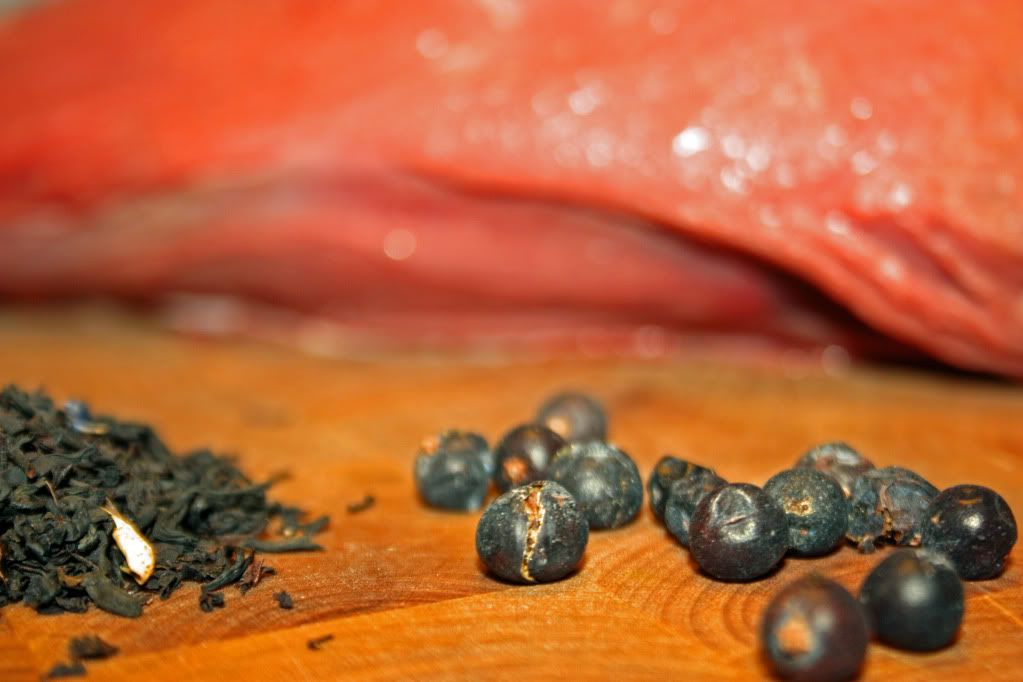
At first I thought they were lingonberries, but much too purple for that. Then I thought juniper, and thought very very clever as juniper tea is a very old European remedy for illness and has the added benefit of being the greatness that gives Gin it's taste.
Can't wait for presentation pics!!
All the pics look great, but this one is zee food ****o-graphy!!

At first I thought they were lingonberries, but much too purple for that. Then I thought juniper, and thought very very clever as juniper tea is a very old European remedy for illness and has the added benefit of being the greatness that gives Gin it's taste.
Can't wait for presentation pics!!
j biesinger
TVWBB Platinum Member
Oh my god guys, another fantastic battle is clearly brewing!!
I was just thinking, this thread needs some puns
j biesinger
TVWBB Platinum Member
Team USA
The usage of tea in the kitchen--not in the traditional sense, as a beverage, but as an ingredient in our foods--is as old as the history of tea itself. Teas can be as varied as wine, with a similar depth and wide range of flavors. Used as a rub, marinade, braise, poaching liquid, source of smoke, etc., tea adds new and unique dimensions of flavor, texture and aroma to recipes of all makes. We took the tea out of the kitchen and into our backyards to create a not so traditional three-course meal that utilizes these aspects. We hope you enjoy!
Appetizer Course presented by Jeff Biesinger
The concept for our first course was to create several small bites of yakimono. Each bite will feature a different tea and application of the tea, and rely heavily on charcoal grilling. I chose to work with a Japanese style because:
Tea is an integral part the culture, especially exhibited by the elegance of the chado
Japanese flavor profiles comfortably range into earthy and bitter and include sensations likeumami and kokumi. Tea seemed a perfect fit, and was an easy partner for sea greens, yuzu (citrus), and spices like poppy seed and sansho
simple flavors and techniques of Japanese cuisine will compliment tea not overpower it
Bite One: Matcha Pumpkin Shrimp Gyoza with Chile Tea Sauce
tea application: ingredient
tea: matcha, powdered green tea
Matcha, was mixed into flour and water to create the gyoza wrapper. The filling included: Weber roasted pumpkin, shrimp, ****aki, scallions, ginger, garlic, tarragon, mirin and soy. The sauce included: matcha, brown rice vinegar, soy, chile sauce, garlic, chive, and sesame oil.
Seasonal ingredients are an important to Japanese cooking, justifying the use of pumpkin. Roasted, sweet, nutty, herbal flavors of the filing and sauce all complimented the matcha.
Bite Two: Black Tea Cured, Heritage Pork Belly with Tea Sea Greens
tea application: dry cure and vegetable pickle
tea: lapsang souchong
Lapsang souchong is a black tea that has been dried over smoking wood. It has an intense smokey flavor and as a drink, must be savored sparingly. I used this unique tea, mixed with kosher salt as a simple cure for pork belly sourced from T Meadow Farm that breeds and pasture raises Gloucester Old Spots and Tamworth pigs. In addition to the cure, the belly was wrapped with kombu to add umami. The package cured for three days before being roasted on the Weber kettle. During roasting the liquid from the kombu and pork reconstituted the dried tea and provided a moist cooking environment, which eventually dried back again allowing the pork to crisp inside of the package. The dried shell was removed, and the pork was sliced and set a top a tangle of wakame and kombu that had been reconstituted with the lapsang souchong tea, as mirror of the cure.
Smokey, salty, dark, earthy, roasted notes, and all express themselves with this bite.
Bite Three: Oolong and Spice Brined Chicken
tea application: brine
tea: Formosa oolong
Formosa oolong tea was steeped with garlic, ginger, cinnamon, star anise, honey, soy and salt to create an overnight brine for chicken. The chicken was kettle grilled and brushed with a light glaze of oolong tea and honey.
Flavors of tea, aromatics, warm spices, and caramelized sugars enveloped the chicken.
Bite Four: Sencha Shichimi Salmon and Citrus Daikon
tea application: rub
tea: sencha green tea
Shichimi is a Japanese blend of several flavors and typically contains powdered nori. I chose to grind sansho (Szechuan pepper), poppy seed, and lemon zest with sencha tea instead of the nori. Lemon is a natural partner for green tea, lending brightness, and the sansho and poppy help to highlight sencha tea’s cooling side.
The salmon was roasted indirect to keep the rub from over heating and turning bitter. The finished salmon was served over daikon that was marinaded in lemon juice and yuzu syrup.
Cooling tea and bright citrus help offset the rich salmon in this bite.
Cocktail pairing: Lapsang Souchong/Shochu Mar-tea-ni
We wanted to pair our yakimono appetizers with a tea based cocktail worthy of the most righteous izakaya. Choosing to mix smokey, simple syrup of lapsang souchong tea with shochu and lemon juice made all too much sense. Our cocktail was shaken with egg white to provide a nice froth. Smoked black tea highlighted the finer notes of our 67% barley, bamboo charcoal filtered, aged shochu, and worked with the four bites by not only complimenting them but also providing a citrus palate cleanse between each of them.
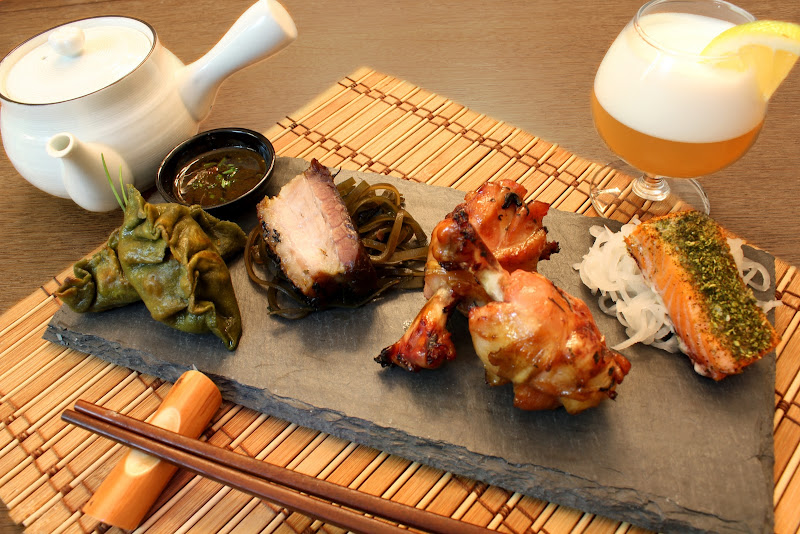
Main Course Presented by Gary Heise
Indian spiced, Tea-smoked duck with ginger-chili glaze
Masala Chai “duchess” sweet potatoes
Grilled white asparagus with black sesame-miso-Assam dressing
Cilantro-Matcha herb oil
Rosemary-Darjeeling spiced pecans
Indian spiced, Tea-smoked duck:
Twenty-four hours before cooking, a whole duck is given a dry rub of kosher salt, homemade curry powder (ground turmeric and dried ginger, cascabel chili pepper, cardamom, brown mustard seeds, fenugreek, fennel, caraway, coriander, cumin) as well as cinnamon and ground star anise.
The next day, the OTG was lit with a half chimney of briquettes, set between two firebricks. The duck was stuffed with two inches of julienned fresh ginger and two scallions, and steamed in a wok while resting on the firebricks for an hour and a half.
The ginger and scallions were removed and the duck was smoked on the WSM for two hours. The first hour, I kept the heat low in the smoker (about 225F) and smoked with ¼ cup of Assam tea leaves and half cup of jasmine rice together in a “cup” of aluminum foil. In a separate foil “cup” I added a half cup of brown sugar for smoking. I also used a small chunk of hickory wood.
After the first hour, I removed the sugar, tea and rice and opened the vents to full, leaving the WSM door slightly ajar to get the heat up to approximately 350F for an hour and crisp the duck skin. Fifteen minutes before removing the duck from the smoker I brushed the entire duck with the ginger-chili glaze.
Ginger-chili glaze:
All skillet use for this Challenge was accomplished in the OTG while resting on a couple firebricks or over the chimney starter with a few lit coals. In a non-stick skillet, I sautéed a coarsely chopped shallot, two inches of ginger, and a stalk of lemon grass until tender. To this I added a half cup of strong Earl Grey Darjeeling tea, two teaspoons of California paprika (for color mostly) and a tablespoon of sambal oelek chili sauce, and reduced by half. This mixture was put through the blender, then strained and set back on the skillet, to which I added a half cup of honey, a dash of salt to taste, a tablespoon of pomegranate molasses and reduced to a glaze consistency. This glaze was also used as a sauce on the finished duck when plated.
Masala Chai “duchess” sweet potatoes:
Four sweet potatoes and one russet potato were smoked on the WSM until tender. The flesh from the sweet potatoes and half of the russet were pulsed in the food processor until smooth. In a non-stick skillet I sautéed approximately 2 teaspoons of cinnamon stick, ten green cardamom pods, three cloves, a dash of grated nutmeg, and two Earl Grey Darjeeling tea bags for several minutes in 4 Tbsp of butter. The butter was strained and added to the mashed sweet potatoes, along with salt to taste and a dash of white pepper. When the mixture cooled somewhat, I stirred in three whipped egg yolks and piped the sweet potato mixture onto oiled aluminum foil, drizzled some butter over the tops and finished the cooking in the WSM at 350-400F for fifteen minutes to brown.
Grilled white asparagus with black sesame-miso-Assam dressing:
Two tablespoons of black sesame seeds were dry-fried in a skillet until fragrant, about two minutes, then ground in the spice grinder. In the skillet, I then simmered a mixture of ¼ cup of balsamic vinegar and ¼ cup of Chinese black vinegar with Assam tea until reduced to about two tablespoons. This was mixed with the ground sesame seeds, two tablespoons of white miso paste, a tablespoon of brown sugar, a tablespoon of molasses and a little lemon juice to make a thick, earthy dressing for the grilled asparagus. The asparagus was simply grilled with a little olive oil and kosher salt on the OTG.
Cilantro-Matcha herb oil:
A half cup of cilantro (one bunch), two chopped scallion, the zest and juice of half a lime, one tablespoon of Japanese matcha tea, and a dash of salt were blended with a third cup of extra virgin olive oil to add an herbal note and a colorful splash to the overall dish.
Rosemary-Darjeeling spiced pecans:
A half cup of pecans were pan-fried in the skillet with one tablespoon of butter for ten minutes. These were then tossed with a tsp of kosher salt, a ¼ tsp of cayenne, a half tsp of finely ground Darjeeling, a Tbsp of brown sugar, and 3 Tbsp of chopped, fresh rosemary.
Plating:
The grilled white asparagus was plated onto black sesame-miso-Assam dressing. The deboned breast of the smoked duck was sliced and rested on top of the asparagus. Ginger-chili glaze was swirled around the edges of the plate, along with a few drops of the herb oil. The mashed sweet potatoes were set around the duck, along with the spiced pecans to finish. Please enjoy!

Dessert Course presented by Don Cash
Grilled Sencha Tea Poached Pears with a Kettle Baked Green Tea Shortbread Cookie and Matcha Whipped Cream.
Bosc pears lightly simmered in a sencha tea, sugar, crystallized ginger and almond extract poaching liquid, then grilled and sprinkled with toasted, sliced almonds. Paired with a simple matcha infused, kettle baked shortbread cookie and a dollop of sweet whipped cream blended with powdered green tea and lightened with low-fat yogurt cheese. A cup of sencha tea on the side.

Much thanks goes to Judges for their time and their honest opinion, and to the Swedes for providing worthy competition. May the best chefs win!
The usage of tea in the kitchen--not in the traditional sense, as a beverage, but as an ingredient in our foods--is as old as the history of tea itself. Teas can be as varied as wine, with a similar depth and wide range of flavors. Used as a rub, marinade, braise, poaching liquid, source of smoke, etc., tea adds new and unique dimensions of flavor, texture and aroma to recipes of all makes. We took the tea out of the kitchen and into our backyards to create a not so traditional three-course meal that utilizes these aspects. We hope you enjoy!
Appetizer Course presented by Jeff Biesinger
The concept for our first course was to create several small bites of yakimono. Each bite will feature a different tea and application of the tea, and rely heavily on charcoal grilling. I chose to work with a Japanese style because:
Tea is an integral part the culture, especially exhibited by the elegance of the chado
Japanese flavor profiles comfortably range into earthy and bitter and include sensations likeumami and kokumi. Tea seemed a perfect fit, and was an easy partner for sea greens, yuzu (citrus), and spices like poppy seed and sansho
simple flavors and techniques of Japanese cuisine will compliment tea not overpower it
Bite One: Matcha Pumpkin Shrimp Gyoza with Chile Tea Sauce
tea application: ingredient
tea: matcha, powdered green tea
Matcha, was mixed into flour and water to create the gyoza wrapper. The filling included: Weber roasted pumpkin, shrimp, ****aki, scallions, ginger, garlic, tarragon, mirin and soy. The sauce included: matcha, brown rice vinegar, soy, chile sauce, garlic, chive, and sesame oil.
Seasonal ingredients are an important to Japanese cooking, justifying the use of pumpkin. Roasted, sweet, nutty, herbal flavors of the filing and sauce all complimented the matcha.
Bite Two: Black Tea Cured, Heritage Pork Belly with Tea Sea Greens
tea application: dry cure and vegetable pickle
tea: lapsang souchong
Lapsang souchong is a black tea that has been dried over smoking wood. It has an intense smokey flavor and as a drink, must be savored sparingly. I used this unique tea, mixed with kosher salt as a simple cure for pork belly sourced from T Meadow Farm that breeds and pasture raises Gloucester Old Spots and Tamworth pigs. In addition to the cure, the belly was wrapped with kombu to add umami. The package cured for three days before being roasted on the Weber kettle. During roasting the liquid from the kombu and pork reconstituted the dried tea and provided a moist cooking environment, which eventually dried back again allowing the pork to crisp inside of the package. The dried shell was removed, and the pork was sliced and set a top a tangle of wakame and kombu that had been reconstituted with the lapsang souchong tea, as mirror of the cure.
Smokey, salty, dark, earthy, roasted notes, and all express themselves with this bite.
Bite Three: Oolong and Spice Brined Chicken
tea application: brine
tea: Formosa oolong
Formosa oolong tea was steeped with garlic, ginger, cinnamon, star anise, honey, soy and salt to create an overnight brine for chicken. The chicken was kettle grilled and brushed with a light glaze of oolong tea and honey.
Flavors of tea, aromatics, warm spices, and caramelized sugars enveloped the chicken.
Bite Four: Sencha Shichimi Salmon and Citrus Daikon
tea application: rub
tea: sencha green tea
Shichimi is a Japanese blend of several flavors and typically contains powdered nori. I chose to grind sansho (Szechuan pepper), poppy seed, and lemon zest with sencha tea instead of the nori. Lemon is a natural partner for green tea, lending brightness, and the sansho and poppy help to highlight sencha tea’s cooling side.
The salmon was roasted indirect to keep the rub from over heating and turning bitter. The finished salmon was served over daikon that was marinaded in lemon juice and yuzu syrup.
Cooling tea and bright citrus help offset the rich salmon in this bite.
Cocktail pairing: Lapsang Souchong/Shochu Mar-tea-ni
We wanted to pair our yakimono appetizers with a tea based cocktail worthy of the most righteous izakaya. Choosing to mix smokey, simple syrup of lapsang souchong tea with shochu and lemon juice made all too much sense. Our cocktail was shaken with egg white to provide a nice froth. Smoked black tea highlighted the finer notes of our 67% barley, bamboo charcoal filtered, aged shochu, and worked with the four bites by not only complimenting them but also providing a citrus palate cleanse between each of them.

Main Course Presented by Gary Heise
Indian spiced, Tea-smoked duck with ginger-chili glaze
Masala Chai “duchess” sweet potatoes
Grilled white asparagus with black sesame-miso-Assam dressing
Cilantro-Matcha herb oil
Rosemary-Darjeeling spiced pecans
Indian spiced, Tea-smoked duck:
Twenty-four hours before cooking, a whole duck is given a dry rub of kosher salt, homemade curry powder (ground turmeric and dried ginger, cascabel chili pepper, cardamom, brown mustard seeds, fenugreek, fennel, caraway, coriander, cumin) as well as cinnamon and ground star anise.
The next day, the OTG was lit with a half chimney of briquettes, set between two firebricks. The duck was stuffed with two inches of julienned fresh ginger and two scallions, and steamed in a wok while resting on the firebricks for an hour and a half.
The ginger and scallions were removed and the duck was smoked on the WSM for two hours. The first hour, I kept the heat low in the smoker (about 225F) and smoked with ¼ cup of Assam tea leaves and half cup of jasmine rice together in a “cup” of aluminum foil. In a separate foil “cup” I added a half cup of brown sugar for smoking. I also used a small chunk of hickory wood.
After the first hour, I removed the sugar, tea and rice and opened the vents to full, leaving the WSM door slightly ajar to get the heat up to approximately 350F for an hour and crisp the duck skin. Fifteen minutes before removing the duck from the smoker I brushed the entire duck with the ginger-chili glaze.
Ginger-chili glaze:
All skillet use for this Challenge was accomplished in the OTG while resting on a couple firebricks or over the chimney starter with a few lit coals. In a non-stick skillet, I sautéed a coarsely chopped shallot, two inches of ginger, and a stalk of lemon grass until tender. To this I added a half cup of strong Earl Grey Darjeeling tea, two teaspoons of California paprika (for color mostly) and a tablespoon of sambal oelek chili sauce, and reduced by half. This mixture was put through the blender, then strained and set back on the skillet, to which I added a half cup of honey, a dash of salt to taste, a tablespoon of pomegranate molasses and reduced to a glaze consistency. This glaze was also used as a sauce on the finished duck when plated.
Masala Chai “duchess” sweet potatoes:
Four sweet potatoes and one russet potato were smoked on the WSM until tender. The flesh from the sweet potatoes and half of the russet were pulsed in the food processor until smooth. In a non-stick skillet I sautéed approximately 2 teaspoons of cinnamon stick, ten green cardamom pods, three cloves, a dash of grated nutmeg, and two Earl Grey Darjeeling tea bags for several minutes in 4 Tbsp of butter. The butter was strained and added to the mashed sweet potatoes, along with salt to taste and a dash of white pepper. When the mixture cooled somewhat, I stirred in three whipped egg yolks and piped the sweet potato mixture onto oiled aluminum foil, drizzled some butter over the tops and finished the cooking in the WSM at 350-400F for fifteen minutes to brown.
Grilled white asparagus with black sesame-miso-Assam dressing:
Two tablespoons of black sesame seeds were dry-fried in a skillet until fragrant, about two minutes, then ground in the spice grinder. In the skillet, I then simmered a mixture of ¼ cup of balsamic vinegar and ¼ cup of Chinese black vinegar with Assam tea until reduced to about two tablespoons. This was mixed with the ground sesame seeds, two tablespoons of white miso paste, a tablespoon of brown sugar, a tablespoon of molasses and a little lemon juice to make a thick, earthy dressing for the grilled asparagus. The asparagus was simply grilled with a little olive oil and kosher salt on the OTG.
Cilantro-Matcha herb oil:
A half cup of cilantro (one bunch), two chopped scallion, the zest and juice of half a lime, one tablespoon of Japanese matcha tea, and a dash of salt were blended with a third cup of extra virgin olive oil to add an herbal note and a colorful splash to the overall dish.
Rosemary-Darjeeling spiced pecans:
A half cup of pecans were pan-fried in the skillet with one tablespoon of butter for ten minutes. These were then tossed with a tsp of kosher salt, a ¼ tsp of cayenne, a half tsp of finely ground Darjeeling, a Tbsp of brown sugar, and 3 Tbsp of chopped, fresh rosemary.
Plating:
The grilled white asparagus was plated onto black sesame-miso-Assam dressing. The deboned breast of the smoked duck was sliced and rested on top of the asparagus. Ginger-chili glaze was swirled around the edges of the plate, along with a few drops of the herb oil. The mashed sweet potatoes were set around the duck, along with the spiced pecans to finish. Please enjoy!

Dessert Course presented by Don Cash
Grilled Sencha Tea Poached Pears with a Kettle Baked Green Tea Shortbread Cookie and Matcha Whipped Cream.
Bosc pears lightly simmered in a sencha tea, sugar, crystallized ginger and almond extract poaching liquid, then grilled and sprinkled with toasted, sliced almonds. Paired with a simple matcha infused, kettle baked shortbread cookie and a dollop of sweet whipped cream blended with powdered green tea and lightened with low-fat yogurt cheese. A cup of sencha tea on the side.

Much thanks goes to Judges for their time and their honest opinion, and to the Swedes for providing worthy competition. May the best chefs win!
Wolgast
TVWBB Olympian
<span class="ev_code_BLACK">Team Sweden</span>
Starter: Lightly smoked/cured moose calf filé carpaccio style.
By Daniel Andersson.
I rubbed the moose calf file with a mix of salt, sugar, juniper berry tea,
and juniper berrys. I placed it in the fridge in a plastic bag with a small amount of Gin.
I also put a heavy milk carton on top of it so it should be under pressure. And i rotated the bag every day for 5 days.
I put some juniper berry tea and alder wood chips in my little smokebox, placed it in the WSM and smoked the file for about half an hour at low temp.
I let I cool down and made a sauce:
1 egg
2 teaspoons white wine vinegar
1 teaspoon Dijon mustard
2 cups corn oil
1 clove garlic, small
0.5 tsp salt
1 pinch white pepper, freshly ground
2 tablespoons chives, chopped
Sliced the filé very thin and served it with baby spinach, sauce and some freshly ground pepper.

-------------------------------------------------
Main: Chickenbreast ala Jap Sendu with Psyco lemon potatoes.
By Dennis Lundin
First off was the chickenbreasts that was marinated in boiled Jap Sendu and also some unboiled Jap Sendu added for more flavour.
Its a green tea and also in the marinade where orange,onions and garlic and some other spices. I marinated the breast for about 3 hours.
Fired up the grill and started with the potatoes.
The potatoes where cut up and covered with sesamoil, garlic, salt, black pepper and a teablend thats called psyco lemon.
A mixture of different green tea´s/lemon and chili. I used this to spice up the potatoes and it came out a little hot and smelling fresh from the lemon and tea.
After that put in foile and spent over an hour on the grill to get done.
The breasts where grilled about 8 minutes on each side to be done ok. And finally it was served with the potatoes and a balsamic vinegar to add some sweetness to the dish.
The tea have a tendensy to make it a little bitter if you are not carefull.
Also the boulingtemp is crusual when doing green tea. To hot and it will taste real bad.

-------------------------------------------------
Dessert: Glace au four
By Daniel Wolgast
We did a Vanilla/Red Tea(rooibos) ice cream,Ontop of a lemon sponge cake with some Rooibos/lime infused raspberries.
coated with a naturell meringue. Baked for 2-3 min using the same setup with the baskets that is shown in pic No #3.
Served with a refreshing White tea(pai mutan)/Lime/mint Ice tea
Every thing was baked/cooked over home made Lump.
Ice Cream:
3 eggs
1,5dl sugar
3 dl heavy cream
1/2 vanilla bean
2t Fine ground Rooibos
_______________________
Meringue:
3 egg whites
1 c sugar
4 drops Lemon juice
_______________________
lemon sponge cake:
3 eggs
1 c Sugar
50 g Butter
1 dl Milk
3,5 dl flour
2 teaspoons baking powder
1 pinch of salt
Zest of 1/2 lemon
butter and bread crumbs so the cake wont stick.

Thanks to everyone involved!
Starter: Lightly smoked/cured moose calf filé carpaccio style.
By Daniel Andersson.
I rubbed the moose calf file with a mix of salt, sugar, juniper berry tea,
and juniper berrys. I placed it in the fridge in a plastic bag with a small amount of Gin.
I also put a heavy milk carton on top of it so it should be under pressure. And i rotated the bag every day for 5 days.
I put some juniper berry tea and alder wood chips in my little smokebox, placed it in the WSM and smoked the file for about half an hour at low temp.
I let I cool down and made a sauce:
1 egg
2 teaspoons white wine vinegar
1 teaspoon Dijon mustard
2 cups corn oil
1 clove garlic, small
0.5 tsp salt
1 pinch white pepper, freshly ground
2 tablespoons chives, chopped
Sliced the filé very thin and served it with baby spinach, sauce and some freshly ground pepper.

-------------------------------------------------
Main: Chickenbreast ala Jap Sendu with Psyco lemon potatoes.
By Dennis Lundin
First off was the chickenbreasts that was marinated in boiled Jap Sendu and also some unboiled Jap Sendu added for more flavour.
Its a green tea and also in the marinade where orange,onions and garlic and some other spices. I marinated the breast for about 3 hours.
Fired up the grill and started with the potatoes.
The potatoes where cut up and covered with sesamoil, garlic, salt, black pepper and a teablend thats called psyco lemon.
A mixture of different green tea´s/lemon and chili. I used this to spice up the potatoes and it came out a little hot and smelling fresh from the lemon and tea.
After that put in foile and spent over an hour on the grill to get done.
The breasts where grilled about 8 minutes on each side to be done ok. And finally it was served with the potatoes and a balsamic vinegar to add some sweetness to the dish.
The tea have a tendensy to make it a little bitter if you are not carefull.
Also the boulingtemp is crusual when doing green tea. To hot and it will taste real bad.

-------------------------------------------------
Dessert: Glace au four
By Daniel Wolgast
We did a Vanilla/Red Tea(rooibos) ice cream,Ontop of a lemon sponge cake with some Rooibos/lime infused raspberries.
coated with a naturell meringue. Baked for 2-3 min using the same setup with the baskets that is shown in pic No #3.
Served with a refreshing White tea(pai mutan)/Lime/mint Ice tea
Every thing was baked/cooked over home made Lump.
Ice Cream:
3 eggs
1,5dl sugar
3 dl heavy cream
1/2 vanilla bean
2t Fine ground Rooibos
_______________________
Meringue:
3 egg whites
1 c sugar
4 drops Lemon juice
_______________________
lemon sponge cake:
3 eggs
1 c Sugar
50 g Butter
1 dl Milk
3,5 dl flour
2 teaspoons baking powder
1 pinch of salt
Zest of 1/2 lemon
butter and bread crumbs so the cake wont stick.

Thanks to everyone involved!
Bill W. Michigan
TVWBB Guru
Originally posted by K Kruger:
Amazing submissions from both teams!
Agreed Very nice !!!
Agreed! Some things occurred to me but there are way more outside of what I thought of. Well done!Amazing submissions from both teams!

